Types of Power Take-offs, Shift Types, and Engagement Methods
When it comes to determining which power take-off (PTO) you need for your application, there are several factors to take into account. Understanding the different types of PTOs, shift options, and their engagement methods will put you one step closer to knowing which PTO you need.
TYPES OF POWER TAKE-OFFS
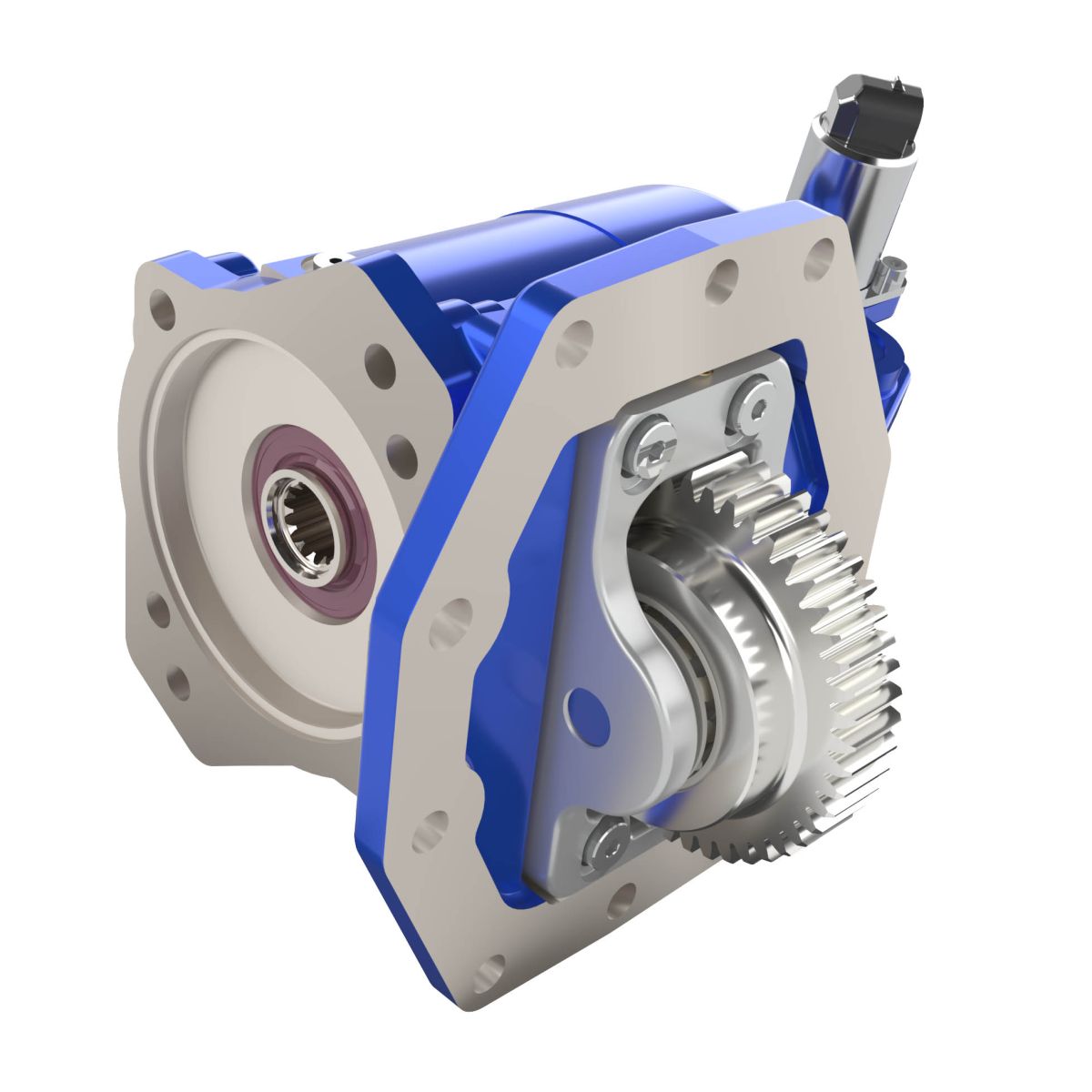
Side-mount PTOs
Side-mount PTOs are the most commonly used PTO type in the North American work truck industry. This popular PTO style can also be known as a bottom-mount PTO due to its location on some transmissions. Also, this PTO meshes directly with the transmission gear when in operation. When talking about which side of the transmission the PTO is mounted on, it’s important to remember it should be from the perspective of the driver’s seat.
Side-mount PTOs are available for nearly all popular transmissions in North America, including SAE standard 6-bolt and 8-bolt openings, as well as transmission-specific, non-standard 10-bolt openings. Non-standard openings often require new PTOs to be manufactured to fit the transmission; such is the case with Muncie Power’s recent F22 Series PTO, which used the new Ford transmission.
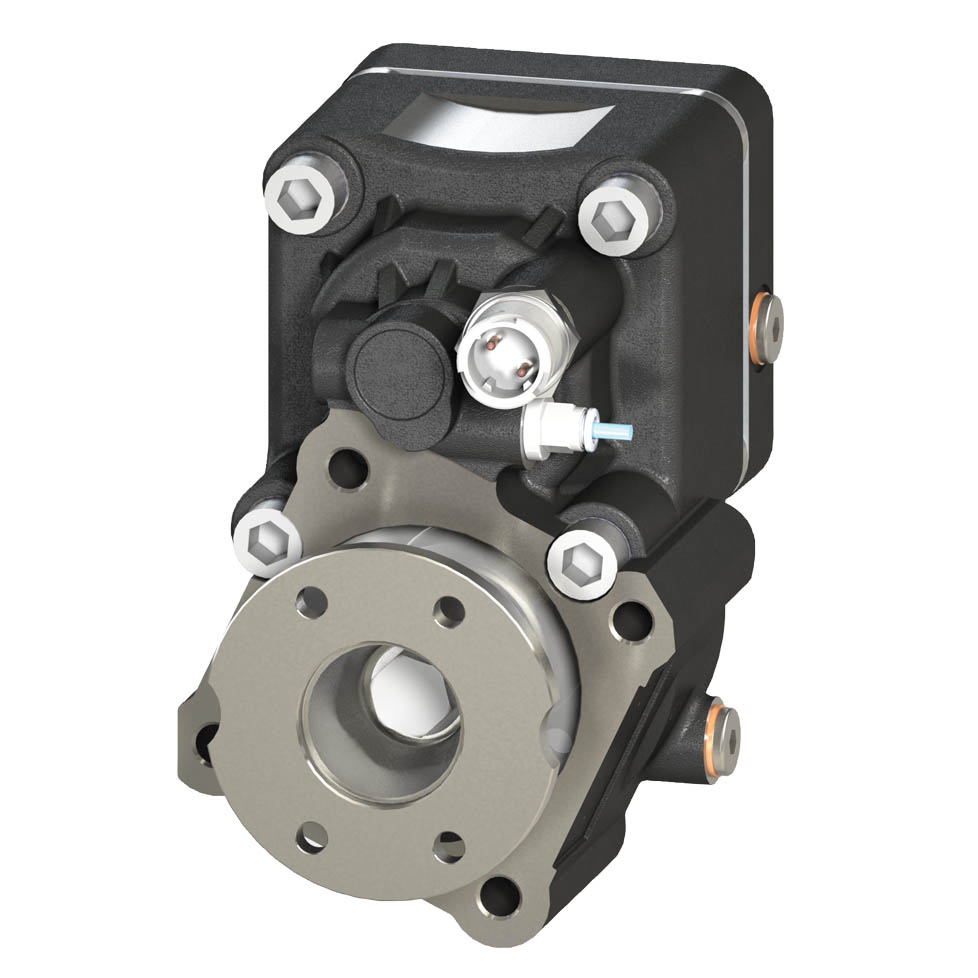
Rear-mount PTOs
The rear-mount PTO has long been a standard on European-style trucks and is commonly used on applications in that market. Rear-mount PTOs, also known as countershaft PTOs, are attached to the rear of the transmission and are driven by the countershaft instead of meshing with a transmission gear. While not as common in North America, rear-mount PTOs do provide some advantages: easier installation due to less interference, higher torque limits, and more compatibility with DIN pump options.
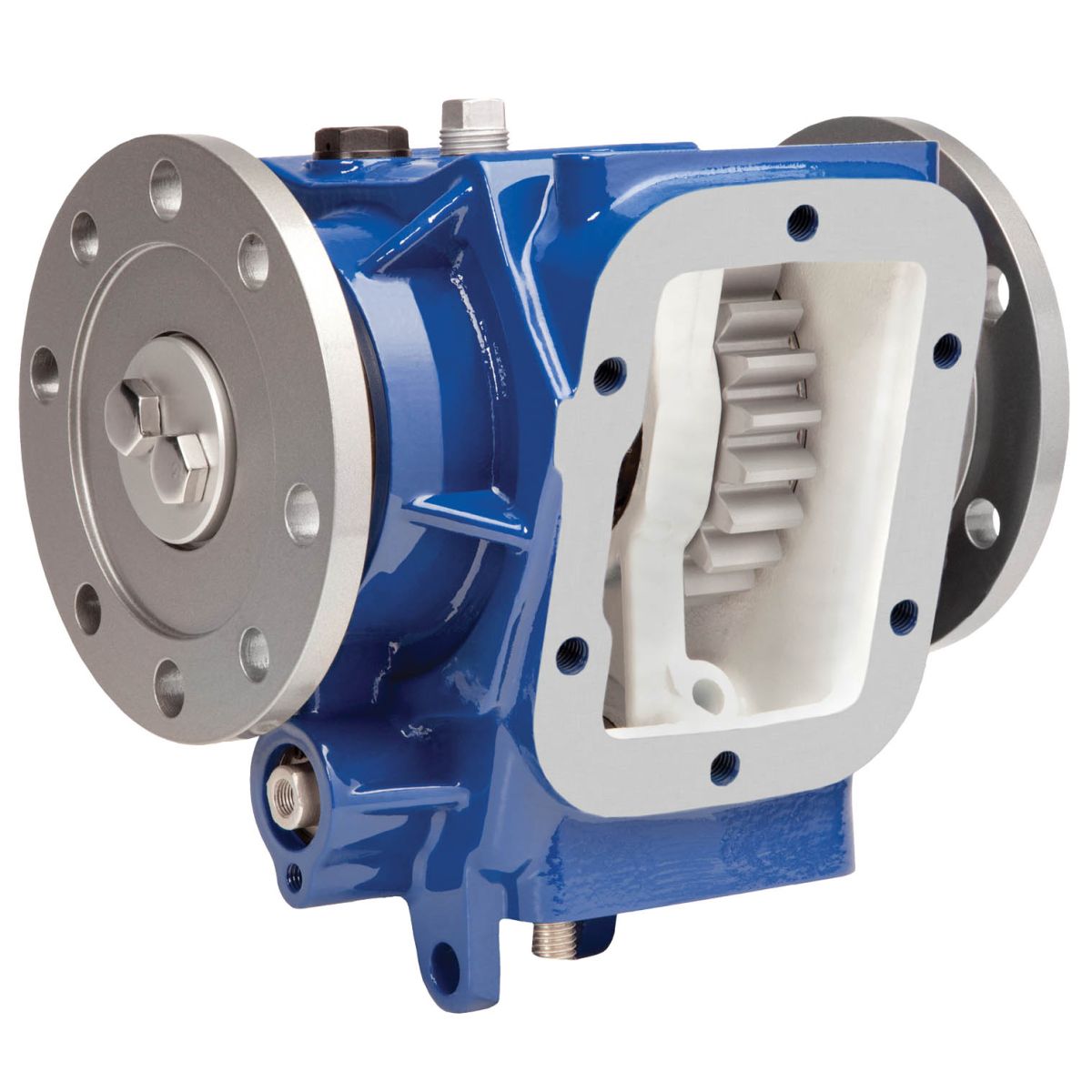
Split shaft PTOs
This type of heavy-duty PTO is used when the application requires higher horsepower and torque than the transmission-mounted PTO is capable of. Split shaft PTOs are also necessary to provide 6- or 8-bolt apertures on vehicles where the transmission PTO aperture doesn’t exist or isn’t able to be used.
When a split shaft PTO is installed, it uses the main vehicle driveshaft as the input rather than being mounted to the transmission and must be properly mounted to the chassis. Additionally, much like other PTOs, it comes in various styles and sizes and can have shiftable driveline or hydraulic pump mount outputs.
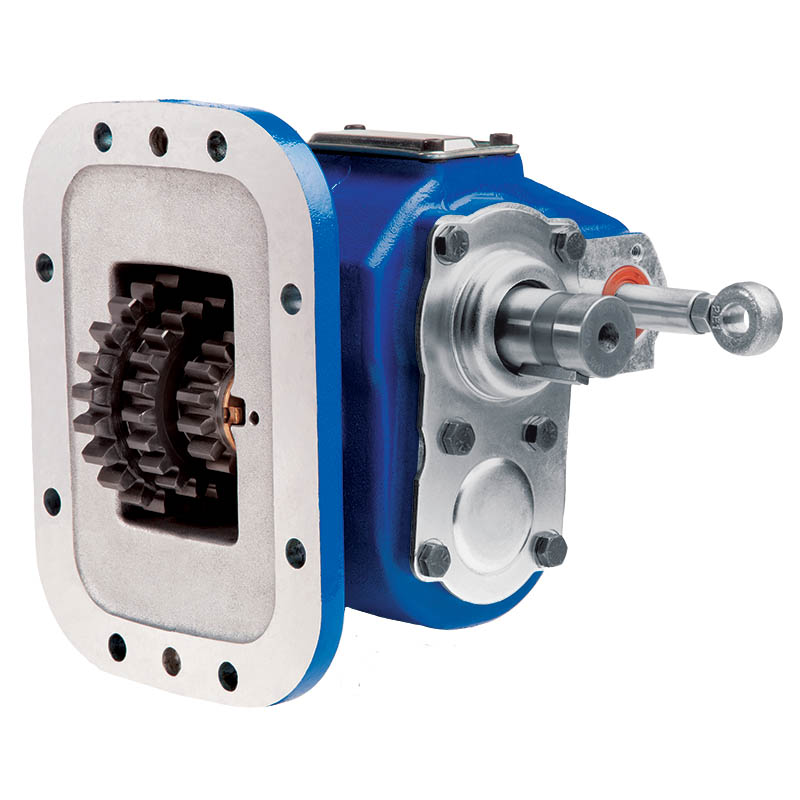
Reversible PTOs
Another type of PTO that is experiencing decreasing popularity is the reversible PTO. Traditionally, reversible PTOs were used to provide power in two directions: mechanical winches and liquid transfer pumps. As hydraulic drives replace mechanical drives in these applications, there is less need for the reversible PTO. Care must be taken not to exceed the PTO’s torque capacity, which, in its reverse gear, is often less than the forward gear.
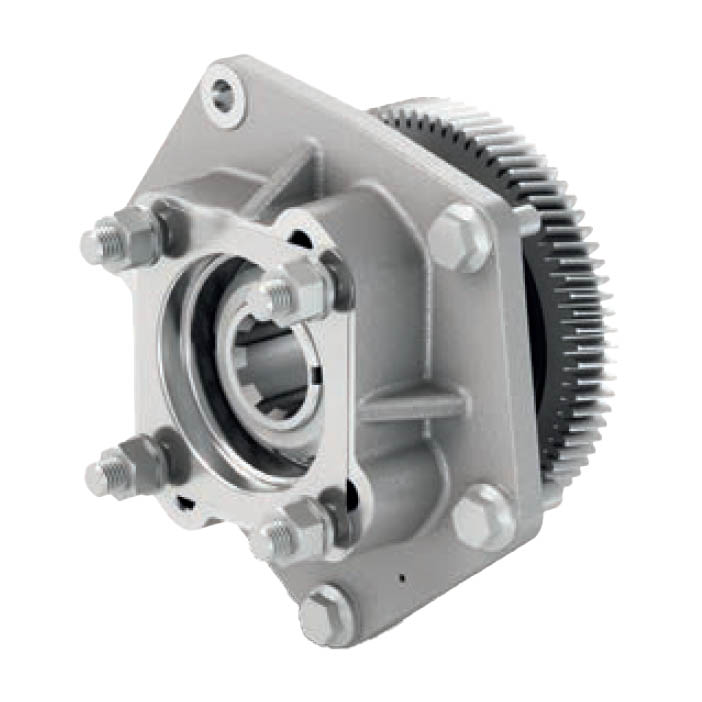
Rear-engine PTOs (REPTO)
Rather than mounting to the rear of the transmission, this type of PTO mounts to the rear of the engine and receives power from the engine crankshaft. Rear-engine PTOs (REPTOs) can maintain hydraulic pressure in the system while the engine is at a lower speed.
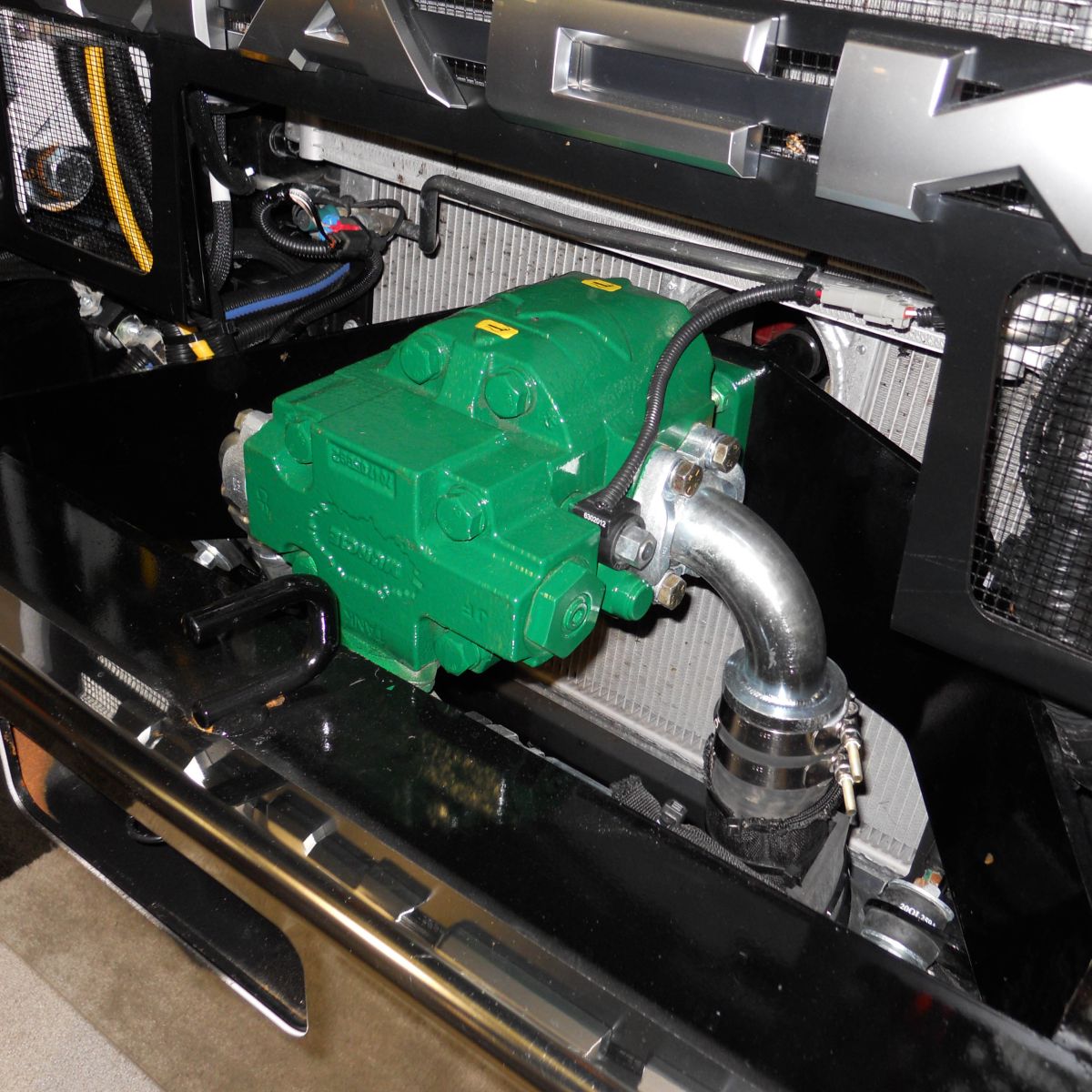
Front-engine PTOs (FEPTO)
Similar to the REPTO concept, the front-engine PTO (FEPTO) pulls power directly from the engine crankshaft. In this case, a driveline runs from the engine through the radiator and grill and is connected to the driven equipment. This is popular in the refuse and snow and ice markets. A dry valve or variable displacement pump is required for this type of PTO, as the driveshaft will turn anytime the engine is running.
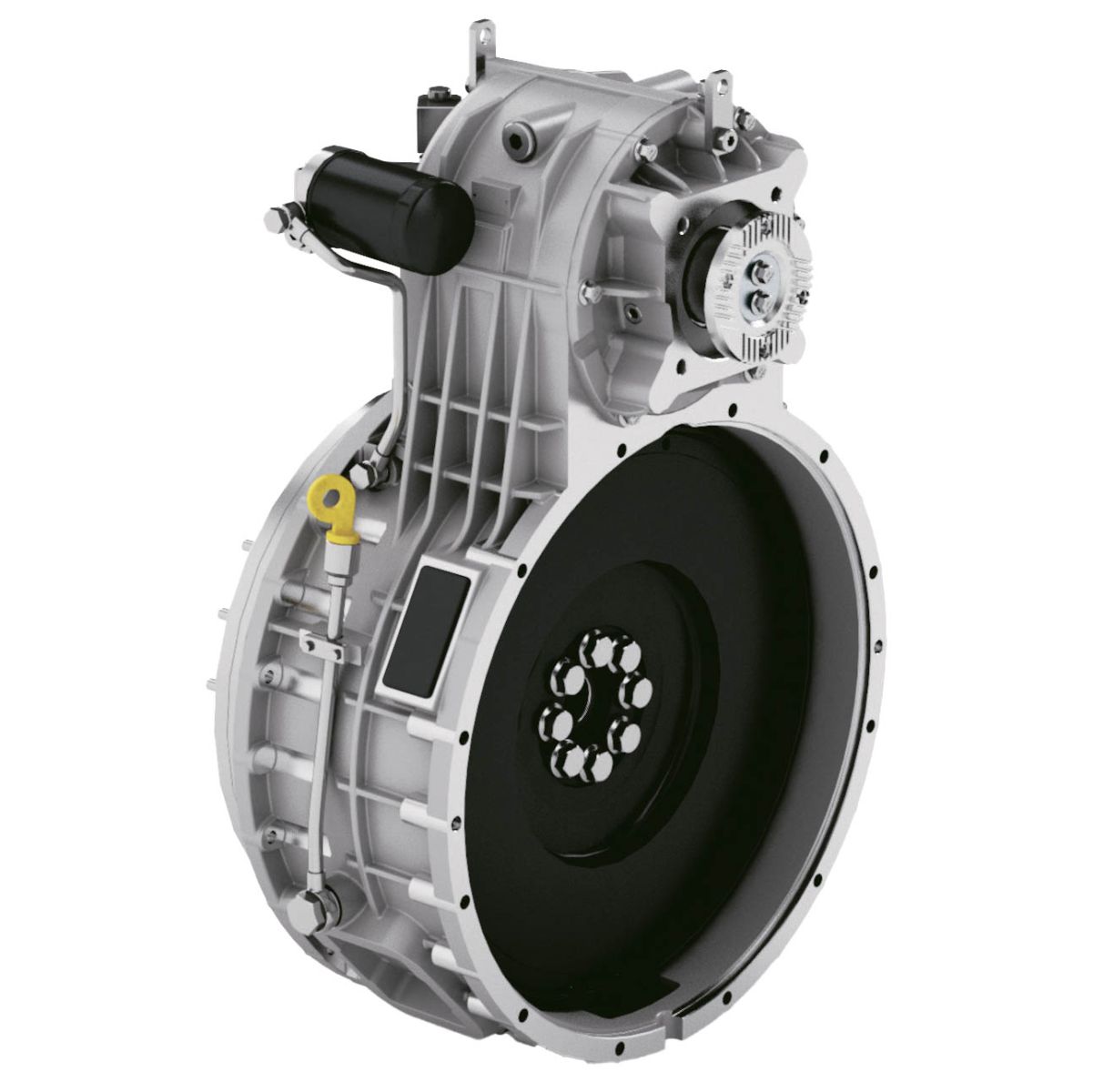
Engine Flywheels
This type is the largest PTO on the market. The engine flywheel (sometimes referred to as the sandwich PTO) goes in between the engine and the transmission. Due to this configuration, it’s critical that the PTO location is taken into consideration before the truck is built.
The engine flywheel allows for the full engine torque and transfers power to a secondary shaft that often drives a pump, generator, blower, or vacuum pump.
SHIFT TYPES
Mechanical shift
Mechanical PTOs are those that are engaged when the gear slides into mesh. Since a PTO is essentially a non-synchronized gearbox, it is important that the operator make certain that the transmission gears stop turning before engaging the PTO. Engaging a mechanical PTO without stopping the turning of transmission gears will result in PTO and/or transmission damage. This type of PTO is typically found on manual transmissions and is engaged using a lever, cable, or air pressure. Mechanical shift PTOs should be disengaged when the transmission is stopped to reduce abnormal wear to the PTO, transmission gears, and/or the shift components.
Clutch shift
The most common PTO found on an automatic transmission is the clutch shift type, which is also commonly referred to as a power shift or hot shift PTO. Rather than engaging using a sliding gear, the clutch shift PTO utilizes friction and spacer discs to engage. When hydraulic or air pressure is applied to an internal piston, the friction and spacer discs are forced together, engaging the PTO. Since there is no possibility of gear clash, this type of PTO can even be engaged with the vehicle in motion (as long as the truck engine speed remains under 1,000 RPM).
Clutch-type PTOs offer many advantages over traditional mechanical shift models, not the least of which is their ability to be engaged and disengaged with the vehicle in motion. This feature also helps to prevent accidental PTO and transmission damage from improper shifting practices. Clutch-type PTOs are commonly used on refuse, utility, and emergency equipment.
Constant drive
A constant drive PTO is non-shiftable, meaning it’s always engaged and always turning the system. These PTOs are ideal for continuous duty applications or applications that require numerous stops at a high frequency with duty cycles that last longer.
Constant drive PTOs are also often smaller and lighter, generally leading to an easier installation process. The biggest challenge for these units is the lack of ability to disengage the PTO while it’s not in use. This can be manageable by pairing the PTO with a variable displacement pump in which you can control flow.
RELATED: To Shift or Not to Shift
ENGAGEMENT METHODS
Air
Air-shifted PTOs are generally connected to the air tank for trucks equipped with air brakes. Air flow to the PTO will be controlled via a pneumatic solenoid valve.
Hydraulic
Hydraulically shifted PTOs are found almost exclusively on automatic transmissions, where the hydraulic pressure is provided by the pump in the transmission. The pressure provided is used to actuate a piston in the PTO that compresses a wet clutch. Most automatic transmissions in the market today require an electrical signal from the PTO to boost the hydraulic pressure for PTO clutch engagement, so care must be taken during PTO installation to ensure that such connections are made.
Cable & Lever
A cable or lever shift PTO is one in which a cable or other linkage is used to manually shift the PTO into and out of gear. These types of PTO are most often found on manual transmissions, where the operator can disengage the transmission clutch and stop the transmission gears from turning when the truck is not in motion.
Electric
Electric PTOs are engaged via a solenoid that acts directly on the shift fork in the PTO. This type of unit is most commonly found on applications where there is no air pressure available for shifting or where the installer does not wish to run air or hydraulic lines to the PTO.
Ready to take the next step? Learn what you need to know to spec’ out a PTO by clicking here.


